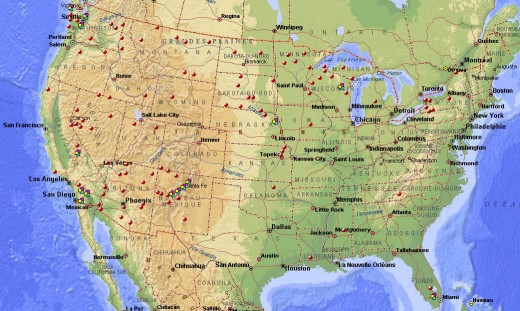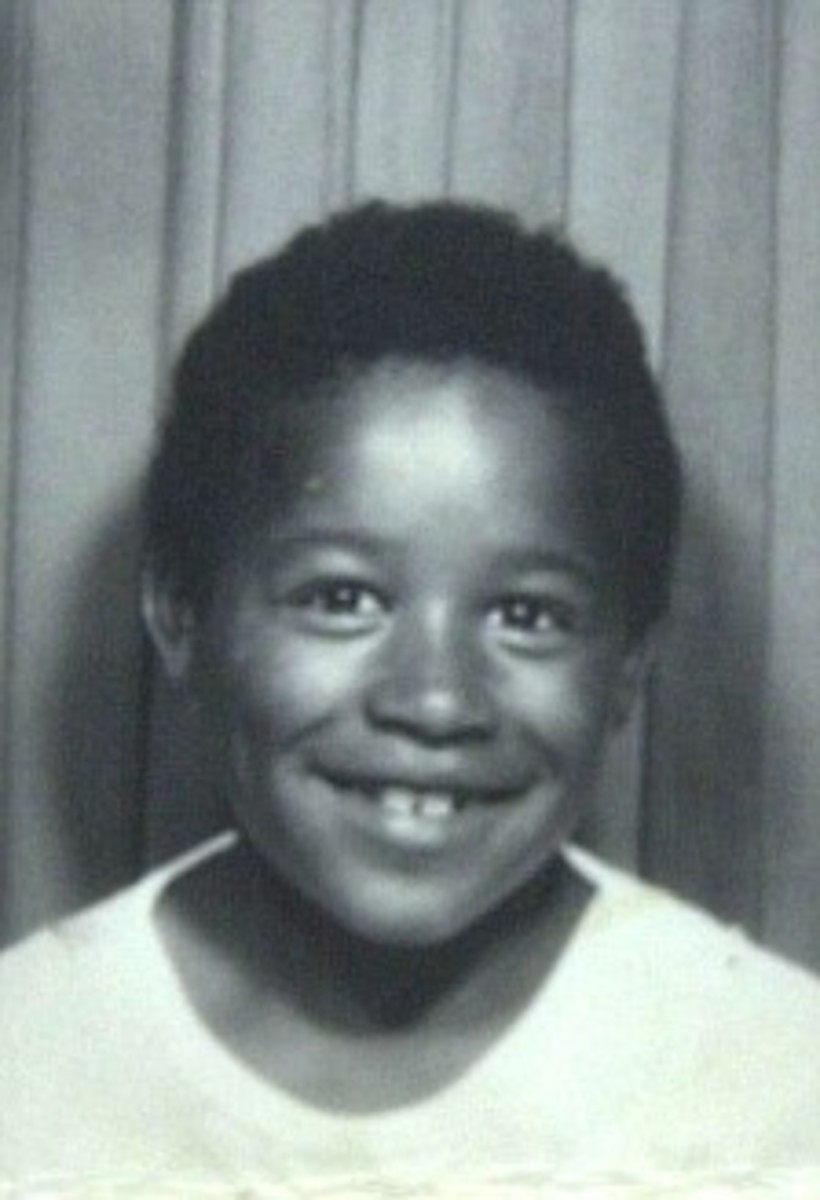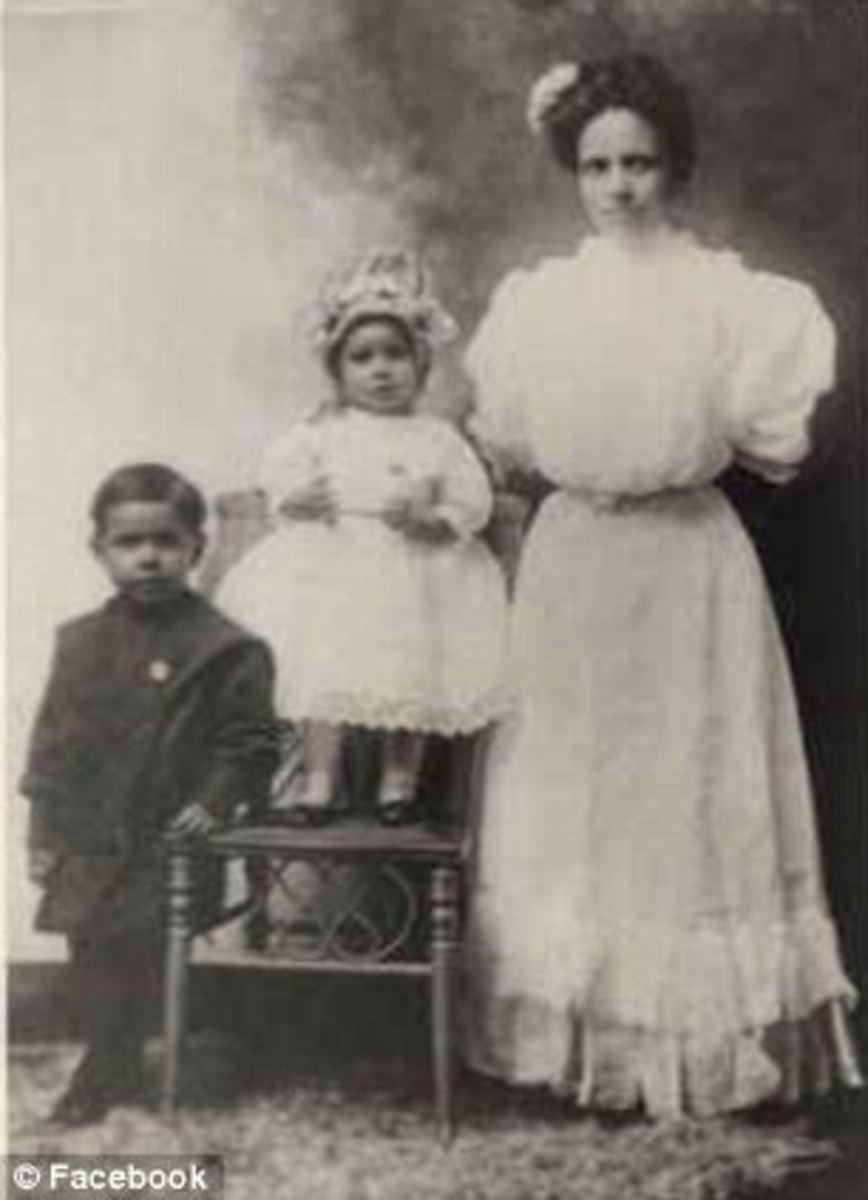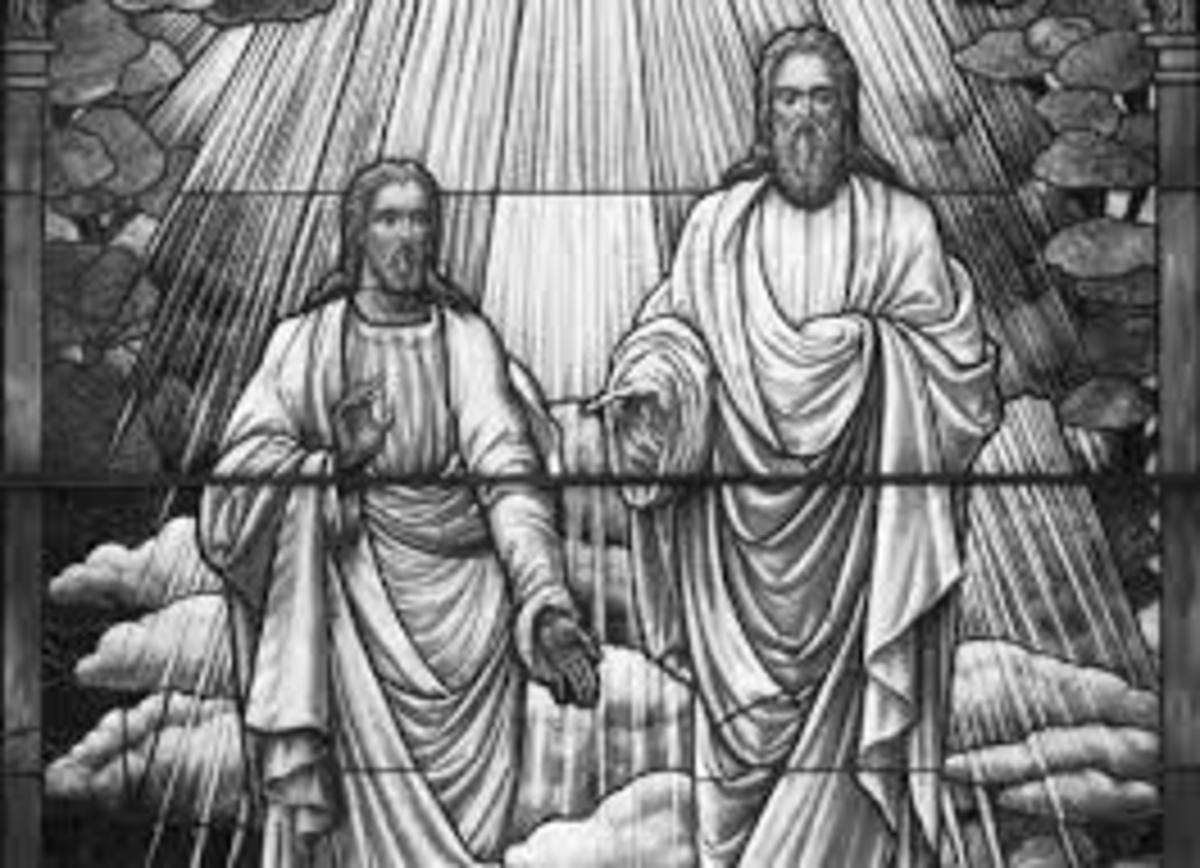They Still Have Native American Reservations
Figure 1

They Still Have Native American Reservations?©
Mark Monroe
July 1, 2011
The other morning some friends and I were solving the world’s problems over a couple of cups of excellently brewed coffee. The conversation that day happened to turn towards the poor living conditions many Native Americans face on the different reservations across the country. Towards the end of the conversation one of the participants asked, “How is it possible in America today that we can allow this to happen?” Given we live in an age where everything is instantly spread over the world by the 24-hour news cycle and the Internet, it seems impossible that people are ignorant what has and is happening to the oldest demographic group on the continent.
It is not that hard to imagine the general lack of knowledge within our society about Native Americans. My own history is a good example to demonstrate this claim. I grew up in North Dakota from 1962 to 1980 when I graduated High School in Ellendale ND. If I went 140 miles east of Ellendale, I would be in the middle of the Sisseton Reservation and if I went 180 to the west, I would be in the Stand Rock Reservation, 160 miles to the north was the Spirit Lake Reservation and to the South about 180 miles was Crow Creek Reservation. This list does not cover the 12 tribes that the Aberdeen SD office the BIS supports. I am naming the four to demonstrate a point, between 150 to 200 miles in any direction I went from my home I would have found myself on a reservation. Yet growing up I can only remember meeting two kids of Native American decent. Living that close I had no direct access to the population, so the issues that effected then were foreign to me.
Growing up as I did, I had no understanding of the history or the relationship between the U. S. Government and the tribes. Most of what I “knew” was based on old stereotypes reinforced by images in western novels, television shows and movies. Even today the historical and present issues that face many tribes remain a mystery for a large percent of the population, to the point where some have no knowledge of the existence of reservations. One place where people can turn to for information about the relationship is the Bureau of Indian Affairs (BIA) website. The opening page of their web site states:
“The United States has a unique legal and political relationship with Indian tribes and Alaska Native entities as provided by the Constitution of the United States, treaties, court decisions and Federal statutes. Within the government-to-government relationship, Indian Affairs provides services directly or through contracts, grants, or compacts to 565 Federally recognized tribes.[1]”
The concept of “dual citizenship” for the Native American population is a nebulous relationship to understand. It needs to be clearly stated that Native Americans are citizens of the United States as of the signing of the 1924 Indian Citizenship Act. "BE IT ENACTED by the Senate and house of Representatives of the United States of America in Congress assembled, That all non citizen Indians born within the territorial limits of the United States be, and they are hereby, declared to be citizens of the United States: Provided That the granting such citizenship shall not in any manner impair or otherwise affect the right of any Indian to tribal or other property. (Approved June 2, 1924)[2] " So while they are citizens of this country, they retain their right to be a citizen of a federally recognized tribe. This also means that they are subject to the management of the Bureau of Indian Affairs (BIA), which was created in 1824[3]. In 150 years of the agency the relationship with the BIA rarely has been equitable or advantageous to Native Americans. In many instances, the actions by agents of BIA were criminal yet had the support or the tolerance of the government. The following list is just a sample of social issues that continue to be a concern to Native Americans, which are a lasting reminder of the relationship between the tribes and the U.S. government.
Health:
- In 2006 the infant mortality rate for Native Americans was 8.3[4] as compared to white non-Hispanic population which was at 5.6. This rate is an improvement, between 1985 and 1986 the infant mortality rate for Native Americans was 13.3
- American Indians and Alaska Natives born today have a life expectancy that is 2.4 years less than the U.S. all races population (74.5 years to 76.9 years, respectively; 1999-2001 rates)[5]
- American Indians and Alaska Natives die at higher rates than other Americans from tuberculosis (600% higher), alcoholism (510% higher), motor vehicle crashes (229% higher), diabetes (189% higher), and unintentional injuries (152% higher). (Rates adjusted for misreporting of Indian race on state death certificates; 2000-2002 rates.)[6] Note that the decimal point is not missing from these statistics; the gaps are really that expansive.
Employment
- In 2009 according to DOL reports the unemployment rate for Native Americans was around 27.3% where in 1986[7] the unemployment rate was 49%.
Suicide
- According to the CDC in 2010 among American Indians/Alaska Natives 15 – to 34-years, suicide is the second leading cause
· Suicide rates among American Indian/Alaskan adolescents and young adults ages 15 to 34 (20.0 per 100,000) are 1.8 times higher than the national for that age group (11.4 per 100,000).[8]
· While in 1986 that rate was roughly 30 per 100,000
Crime
· American Indians and Alaska Natives die from homicide 61% higher rate[9]
Housing
· Safe and adequate water supply and waste disposal facilities are lacking in approximately 12% of American Indian and Alaska Native homes, compared to 1% of the homes for the U.S.general population.[10]
The items just listed do not represent a comprehensive list. However it is enough information to explain why my friend asked, “How is it possible in America today that we can allow this to happen?” In a country such as ours, no citizen should have to have to live under those conditions. Now, there is a belief in the mainstream that the introduction of gambling casinos on many reservations should have eliminated many of the problems, because of the influx of funds. Nevertheless, not every operation is successful as a PBS report shows. “Not every Indian casino is a financial success. Currently, only 12 percent of the Indian gaming operations generate 65 percent of Indian gaming revenue. Operations in the most populous areas, like California, New York and Florida, are the fastest growing sector of the Indian gaming industry.[11]” Yet even on reservations where gambling operations have been successful, many of the same social issues exist. That is because money is only one part of the solution, some times little things have a significant impact as well.
Firgure 2

I relearned a lesson about the little things while I was home on vacation this summer. On the trip, I was listening to a conversation between two graduates of the University of North Dakota (UND). It seems that the University has found itself in a bit of a controversy over its mascot. The University is known as the home of the Sioux, which it adopted in 1930, latter the popular name became the home of the Fighting Sioux, prior to that they were known as the Flickertails. For more than a decade, groups have been calling for the University to change the mascot. Then in 2011, the North Dakota State Legislature passed into law a mandate for the University to keep its mascot.
“Neither the university of North Dakotan or the state board of higher education may take any action to discontinue the use of the fighting Sioux nickname or the fighting Sioux logo in use on January 1, 2011. Any actions taken by the state board of higher education and the university of North Dakota before the effective date of this Act to discontinue the use of the fighting Sioux nickname and logo are preempted by this Act. If the national collegiate athletic association takes any action to penalize the university of North Dakota for using the fighting Sioux nickname or logo, the attorney general shall consider filing a federal antitrust claim against that association.[12]”
One of the arguments to maintain the mascot came from, “Sen. Dick Dever (R-Bismarck) reminding members that, “Discrimination comes in many shapes and sizes and sometimes from unexpected places.” He posited the argument that retiring the nickname and logo would do nothing to end discrimination against Native Americans on campus or off.[13]” The Senator acknowledges that discrimination against Native Americans exists but this is not the way to address the issue.
This piece of legislation was the calumniation of many years of legal battles the University has fought over the use of the mascot. The money raised to defend the continued use has come at the hands of North Dakota taxpayers and private donations. It was the same contributors, when they saw that the school was actually going through with the change flooded the legislature for the passage of House Bill # 1263.
According to the University’s website, the reason they are changing the mascot is not out of respect but compliance with NCAAP mandate.
“The University of North Dakota (UND) is changing its Fighting Sioux nickname and logo at the direction of the North Dakota State Board of Higher Education and in compliance with a settlement agreement with the National Collegiate Athletic Association (NCAA). On May 14, 2009, the State Board adopted a resolution that directed “UND officials to retire the ‘Sioux’ nickname and logo, effective August 1, 2009.” At subsequent meetings, the State Board extended the August 1, 2009 deadline. In April 2010, the State Board implemented the May 2009 resolution and charged Chancellor William Goetz to send a letter directing UND President Robert Kelley to start the process of changing UND’s nickname and logo. The State Board’s decision stems from the conditions of an agreement settling UND’s lawsuit with the NCAA.[14]”
The President of the University and others still called for the retirement of the mascot despite the current legislation. Given the statistic that were cited earlier, it might appear to some that it is petty to spend millions of dollars in legal funds arguing over the use of the image, when those finances could be used addressing the issues on the reservation. Part of the answer is yes it would be beneficial to have those funds diverted to programs that address poverty, infant morality, etc. However, the reality is that people putting up the money to protect the mascot are not willing to spend those same funds on social issues. In addition, existence of funds is only part of the solution.
There is a direct relationship between the mascot and the social ills of the reservation. In a 2007 interview about the former Chairman, Ron His Horse Is Thunder, he explained why the mascot needs to be retired.
“At a recent press conference held on UND’s campus, Chairman His Horse Is Thunder reaffirmed his tribe’s opposition to the mascot by stating, “It’s part of who we were, not who we are.” He further stated of the mascot that “it must be changed.” In support of his position, He said that he runs in to harmful and ignorant stereotypes of Indians all the time, and that the UND mascot “perpetuates that stereotypical image, … and doesn't give them the encompassing image of who we are.” Chairman His Horse Is Thunder rightly stated that tribal members come to the University “to expand our horizons… to become part of the modern world.” Tribal members should not be remembered most for wearing “buckskins and headdresses” and “for fighting the cavalry.” He also pointed out that past support by Standing Rock tribal leaders were voided by broken promises from UND officials about how the mascot would be used.[15]”
What is at the heart of the debate is the value of identity. Ten years ago, I touched on the issue of Native Americans in my graduate thesis. What I wrote back then provides for a perfect launching point for this discussion. What follows is an excerpt of a conversation with a woman on the Pine Ridge reservation. It is an example of how the identity of a people was taken from them.
“Speaking our language was not allowed, it was outlawed just like everything associated with our way of life. If you where caught speaking it you were punished. I remember one time there was these two sisters talking to each other in our language. That was all they were doing, just talking and laughing.
The Nuns came. The oldest girl, in an attempt to protect her younger sister told the Nuns that it was her fault. She was the one who was speaking the language. Two of the Nuns grabbed her, one on each side. The third Nun began to slap her face. All the time they tried to get the girl to confess that her sister was speaking the language too. But never once did the girl betray her sister.
For awhile the girl took the punishment in silence there was very little else that she could do. The Nuns had her in a tight grip so there was no running away. In time she had had enough and fought back the only way that she could, by cussing the Nuns. The more she cussed the harder they beat her. They beat this poor little girl right in front of her sister until she was bleeding from the nose and mouth.
The Nuns did not know that I was watching them and when they did discover that I was watching, the beating still did not stop. They continued on for several minutes. It was as if they were saying, we know what is best for you, even if we have to beat it into your heads so you understand it.[16]” [17]
This conversation demonstrates that part of the actions that took place against the Native American population was not just a physical defeat. There was an attempted elimination of the soul of a people, so that nothing of the culture could survive. The social issues discussed earlier are the lingering effects of those actions. There are two components to addressing the issues affecting many Native Americans; they are resources and identity. Resources are having the adequate means to support the population. However, without a positive self-identity the effectiveness of the resources will be limited. Conversely, without the resources reconstructing a positive self-identity would be virtually impossible. Think of Maslow's hierarchy of needs, providing for the basic physical needs does not fulfill the person. However, a person is not able to reach self-actualization without first taking care of the basic needs. Supporting the two components is education and awareness of the total population, so they can see beyond the stereotypes and prejudice to see the people. It is only through awareness will my friend’s question ever be answered.
Endnotes:
[1] Bureau of Indian Affairs. http://www.bia.gov. (accessed June 29, 2011)
[2] Native American Citizenship 1924 Indian Citizenship Act. http://www.nebraskastudies.org/0700/frameset_reset.html?http://www.nebraskastudies.org/0700/stories/0701_0146.html. (accessed June 23, 2011)
[3] Prior to the BIA, Native American issues were handled out of the Committee on Indian Affairs created in 1775 and was first headed by Benjamin Franklin.
[4] http://minorityhealth.hhs.gov/templates/content.aspx?ID=3038
[5] Indian Health Service. Facts on Indian Health Disparities. January 2006
[6] IBID
[7]EducationResourceCenter. http://www.eric.ed.gov/ERICWebPortal/search/detailmini.jsp?_nfpb=true&_&ERICExtSearch_SearchValue_0=ED302346&ERICExtSearch_SearchType_0=no&accno=ED302346. (AccessMay 30, 2011)
[8] http://www.cdc.gov/ViolencePrevention/suicide/(accessed June 29, 2011)
[9] Indian Health Service. Facts on Indian Health Disparities. January 2006
[10] Indian Health Service. Facts on Indian Health Disparities. January 2006
[11] Indian Country Diaries. Economic. http://www.pbs.org/indiancountry/challenges/casinos.html. (accessed June 29, 2011)
[12] HOUSE BILL NO. 1263 (Representatives Carlson, Dosch, R. Kelsch, Skarphol)
[13] PlainsDaily.com.Bommarito, Kate. ND Senate Votes to Keep the Fighting Sioux. PostedMarch 11, 2011. http://plainsdaily.com/entry/nd_senate_votes_to_keep_the_fighting_sioux/. (accessed June 30, 2011)
[14] http://nickname.und.edu/logo/?page_id=503#b1. (accress June 29, 2011)
[15] Honor Indians Institute. Honorable Mention: Chairman Ron His Horse is Thunder . http://honorindians.com/honorable-mention-chairman-ron-his-horse-is-thunder/. Posted on November 29, 2007 (accessed June 29, 2011)
[16] The timing of this event was mid 60’s early 70’s the time of the interview was June 1998
[17] Monroe, Mark. The Metaphysics of Discrimination.
Pictures:
Figure 1: Native American Reservations Today: http://www.howling-wolf.org/Indian_Reservations/today.html (accessed July 1, 2011)
Figure 2: Darkwater Retreat: http://darkwaterretreat.com/?tag=native-american (accessed July 1, 2011)
© 2011 Mark Monroe




